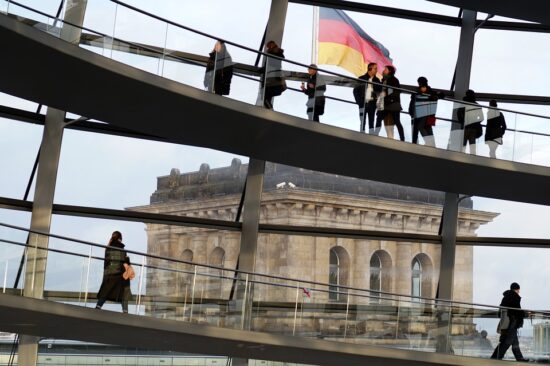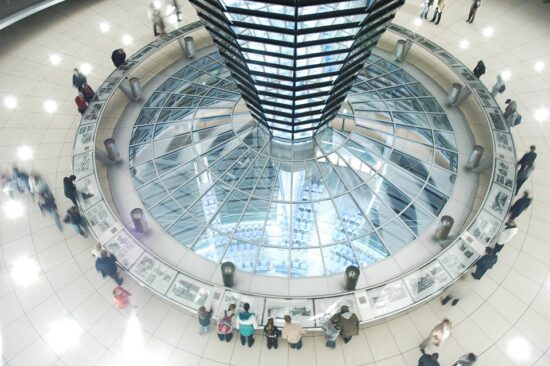Reichstag
The architect Paul Wallot designed the Reichstag building in the 1880’s. In 1894 the cornerstone was laid for the building, the image of which is characterized by a striking dome and four corner towers. Wallot considered the dome, which at that time represented a technical masterpiece, to be indispensable both for reasons of the lighting effect in the building and for reasons of the overall aesthetic effect.
In 1918 the Reichstag building was the focus of the revolutionary events in Berlin. After the emperor’s abdication, the social democrat Philipp Scheidemann proclaimed the republic from a window in the building on November 9, 1918, and the Berlin workers ‘and soldiers’ councils met in the plenary hall. Only in 1919 did the parliamentarians return to the Reichstag building.

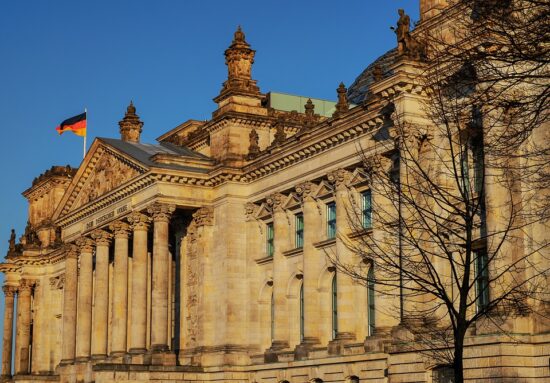
Like the beginning, the end of the Weimar Republic was closely linked to the fate of the Reichstag building. A fire, presumably started by the Dutch anarchist and communist van der Lubbe, destroyed the plenary hall of the Reichstag building on the night of February 27-28, 1933.
During the Second World War, the Reichstag building was the focus of the “final battle for Berlin”, as the conquest of the building was highly symbolic for the Red Army. After the war, due to a questionable decision, the damaged dome was blown up. The reconstruction of the Reichstag building was completed by the architect Paul Baumgarten by 1973. After the Bundestag decision of June 20, 1991 to relocate parliament and government to Berlin, the British architect Norman Foster was commissioned to convert the building. Parliament also resolved to re-erect a dome, albeit a modified one compared to Wallot’s work.
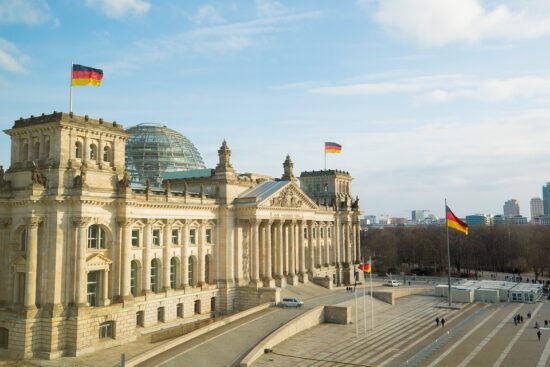
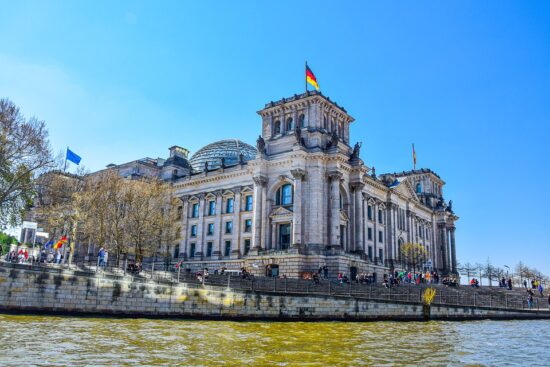
On April 19, 1999, President of the Bundestag Wolfgang Thierse was able to hand over the building to its intended use. The architect Foster has succeeded in creating an impressive combination of tradition and modernity. He opened lines of sight right through the building. From the east side to the west side, from the dome to the plenary hall or across several floors. He created large brightly lit rooms. This way he gave the building, which was characterized by the style of the 19th century, a high degree of transparency and ease.
At the same time, it exposed a large part of the historical building fabric and opened one’s eyes to Wallot’s architecture with the damage caused by the fire in the Reichstag, World War I and reconstruction work. (Translation by https://www.bundestag.de/besuche/architektur/reichstag/geschichte)
